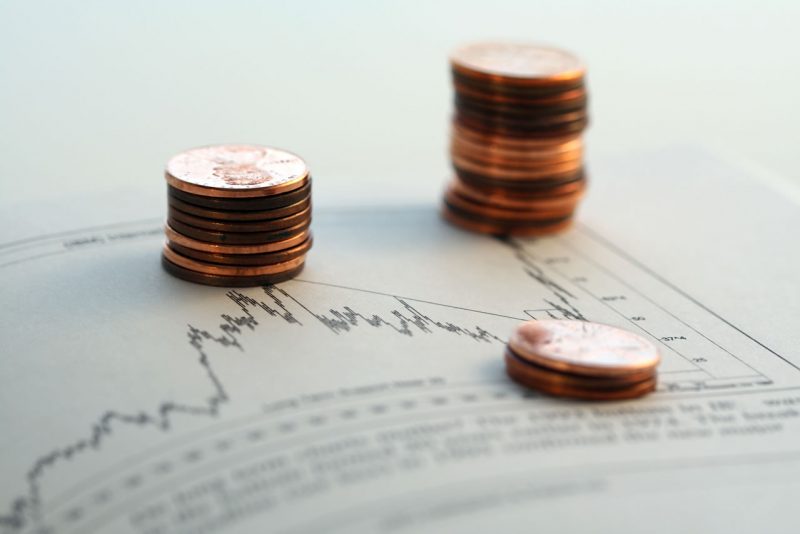How can you survive inevitable market falls?

Investors have experienced very strong investment markets since the Credit Crisis a decade ago. Some may have forgotten, or never experienced, the pain – and even fear – that such events can induce. When falls do happen, how investors behave will have a great bearing on the longer-term outcomes they will experience.
Today, £100 invested at the bottom of the global equity market fall in March 2009, would be worth around £345 (before inflation and any costs). It is important to remember that equity market falls are an inevitable part of the process of building wealth through equity ownership. How can you put market falls in perspective and learn to survive them?
Sometimes it helps to remind ourselves why investors deserve positive returns from ownership stakes in companies (equities) and lending their money to governments and corporations (bonds); it is because the outcome that they will receive from their investments is uncertain.
The future dividend stream from equities is, intuitively, far less certain than the contractual payment of coupons (interest) and return of principal at the maturity date of a bond. The greater the uncertainty of the outcome, the more an investor needs to be compensated with higher returns. The market’s view on the ability of a firm to deliver dividends – impacted by multiple factors, such as management strength, strategy, competition and the state of the economy – plus its perception of risk – can have a large impact on the price of a share, leading to share price volatility.
If returns went up year-in, year-out, there would be no uncertainty of outcome and investors would be lucky to generate a return much higher than inflation. Longer-term investors should embrace – and learn how to survive – this shorter-term uncertainty, as it is the basis of strong longer-term equity returns.
You have got to be in it to win it
If we looked at the monthly returns of global equities from January 1999 to February 2018 we would notice that markets are very volatile on a monthly basis. There are almost as many ‘down’ months as there are ‘up’ months. Secondly, ‘hanging in there’ – through thick and thin – is worth pursuing; £100 invested in January 1999 more than tripled in value by the end of February 2018.
It would be wonderful if someone rang a bell to tell investors when to get out of the market and rang it again to tell them when to get back in; but it is evident that picking the month, or even year, to do so is well-nigh impossible.
On the other hand, even if you had ‘got it wrong’ and invested at the very height of the market, say just before the Tech Wreck (2000-2003) and the Credit Crisis (2007-2009), your £100 would still be worth £232 (4.9% p.a.) and £227 (8.3% p.a.) respectively at the end of February 2018. The key message is to remain invested.
It can be unsettling to look at the value of your portfolio too often. Even the data you see at a progress meeting with your adviser (e.g. six monthly or annually) is largely noise and your portfolio is likely to be down on one in three visits to see them.
Fake news and true bear markets
Those participating day to day in the markets or commentating on them (‘Billions of pounds wiped off UK shares’ etc.), risk failing to see the wood for the trees and tend to induce feeling of panic, concern and sometimes even hysteria over short-term falls. Much of the time the doom mongering is overdone. In every year there will always be periods when markets fall below their highpoint.
If we listen to this noise, we would spend most of our time being afraid of markets instead of embracing them.
Thirteen out of the last nineteen years (1999 to 2018) have delivered positive returns, despite suffering intra-year falls from the market high that year. Generally, investors should expect a down market one in every three years or so. Look at 2009, as an extreme example; during the calendar year, the global markets suffered a loss of nearly a quarter of their value yet finished the year up almost 20%. Selling out and missing the rise would have been extremely costly. Likewise, in 2016, the market fell almost 10% during the year, but ended up over 28%. If investors panic when markets fall – perhaps switching into cash – they will inevitably suffer financially and emotionally on many occasions, when staying invested would have been the right thing to do. Responding to short-term market noise is to be avoided at all costs.
On some occasions, these falls can continue from one period to the next, turning from short-term noise into medium-term bear markets, some of which can be emotionally nerve wracking. The trouble is that by the time you can see that it is more than a very temporary downturn it is too late. Remarkably, and sadly, US investors in equity mutual funds made record withdrawals coinciding with the bottom of the markets during the Tech Wreck and Credit Crisis. Buy high, sell low is a strategy that guarantees wealth destruction.
If market timing were so easy, it would be simple to make vast amounts of money and there would be few professional fund managers left, as they would all be sunning themselves on their yachts in the Caribbean. It is not; and they are not.
Owning equities in portfolios is not easy. Yet, the very nature of the uncertainty of outcomes is why decent returns can be expected from owning them. Markets will fall at some point and when they do, rely on the structure of your portfolio to see you through. Don’t panic. Investors who have fortitude, discipline and patience will fare best. Those who need support should lean on their adviser – that is what he or she is there for.
Ten things to remember as and when markets fall:
1. Embrace the uncertainty of markets – that is what delivers you with strong, long-term returns.
2. Do not look at your portfolio too often. Once a year is more than enough.
3. Accept that you cannot time when to be in and out of markets – it is simply not possible.
4. If markets have fallen, remember that you still own everything you did before (the same number of shares in the same companies, and the same bonds holdings).
5. A fall does not turn into a loss unless you sell your investments at the wrong time.
6. Falls in the markets and recoveries to previous highs are likely to sit well inside your long-term investment horizon i.e. when you need your money.
7. The balance between your growth (equity) assets and defensive (high quality bond) assets was established by your adviser to make sure that you can withstand temporary falls in the value of your portfolio, both emotionally and financially, and that your portfolio has sufficient growth assets to deliver the returns needed to fund your longer-term financial goals.
8. Be confident that your (boring) defensive assets will come into their own, protecting your portfolio from some of equity market falls. Be confident that you have many investment eggs held in several different baskets.
9. If you are taking an income from your portfolio, remember that if equities have fallen in value, you will be taking your income from your bonds, not selling equities when they are down.
10. Your adviser should be there – at any time – to talk to you. He or she can act as your behavioural coach to urge you to stay the course.
Patrick Convey is technical director of Cavendish Medical. To speak to Pat or one of the Cavendish team, please call 020 7636 7006.


